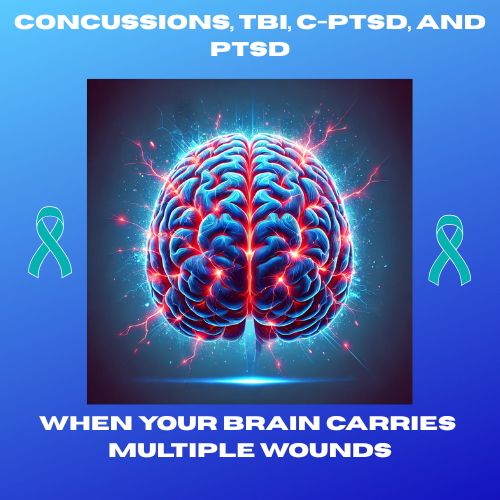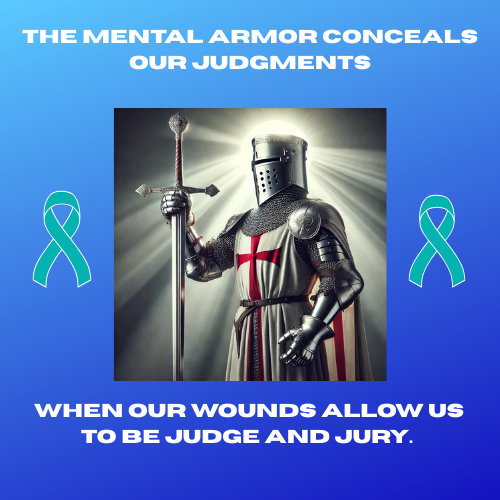The Dark Shadow: A Nation's Struggle with Violence, Division, and Economic Turmoil
The Dark Shadow: A Nation's Struggle with Violence, Division, and Economic Turmoil
THIS IS NOT A POLITICAL POST:
This is a reflection on history, on the devastating effects of systemic oppression, and on the lessons it holds for all nations. During the apartheid era, South Africa experienced chaos, violence, and tragedy, a period whose effects still resonate in the modern era. The struggle of the South African people, their resilience, and the subsequent challenges faced by the nation offer a sobering reminder of the consequences of division and unchecked power.
The Brutal Reality:
The apartheid era in South Africa (1948–1994) was defined by state-sponsored violence and the ruthless enforcement of racial segregation. The government, led by the National Party, institutionalized racial discrimination in every aspect of life. The brutality of the regime's oppression was unparalleled.
The government granted police and military forces excessive power to suppress dissent and uphold control. They raided homes in the dead of night, dragging people from their beds, activists, community leaders, or even those simply suspected of opposition. Many of these individuals were never seen again, their fates sealed in the shadows of detention centers like the notorious John Vorster Square in Johannesburg, where torture and violence were routine.
The violence extended into public spaces and townships, where protests were met with live ammunition. The Sharpeville Massacre of 1960, where police opened fire on unarmed protesters, killing 69 men, women, and children, was an early sign of the regime's willingness to use lethal force. Later, during the 1976 Soweto Uprising, schoolchildren protesting the imposition of Afrikaans as a medium of instruction were met with teargas and bullets. Hundreds were killed in the ensuing chaos, with the iconic image of 13-year-old Hector Pieterson's lifeless body carried by a fellow student capturing the world's attention.
In the townships, the government-sponsored violence was met by retaliatory brutality. Community members labeled as "informants" were often executed in horrific ways, including the infamous "necklacing" method, where a car tire filled with gasoline was placed around a person's neck and set alight. This gruesome practice, associated with factions of the anti-apartheid struggle, added to the climate of fear and chaos that engulfed the country.
Educational Trauma and Cultural Division: Racial Tension.
Education under apartheid was not a pathway to opportunity but a weapon of oppression. The Bantu Education Act of 1953 deliberately designed an inferior education system for Black South Africans, ensuring they could only aspire to menial labor. Dr. Verwoerd, the so-called "architect of apartheid," infamously declared, "There is no place for Black Africans in the European community above the level of certain forms of labor."
For Black children, schools were underfunded, overcrowded, and poorly staffed. The curriculum focused on manual skills rather than intellectual development, preparing students for a life of servitude. Meanwhile, white students enjoyed well-funded schools and access to a world-class education, widening the gap between races.
Even among white South Africans, cultural divisions ran deep. Afrikaners and English-speaking South Africans harbored resentments dating back to the Anglo-Boer War (1899–1902), when the British Empire waged a brutal campaign against the Afrikaner population. These tensions often played out in schools, where Afrikaner and English children bullied one another, perpetuating divisions that mirrored the broader societal fractures.
Education also became a flashpoint for resistance. The government's decision to enforce Afrikaans as the medium of instruction in Black schools in 1976 sparked the Soweto Uprising, one of the most significant events of the apartheid era. Students, many as young as 10 or 11, took to the streets in protest, chanting slogans like "Down with Afrikaans" and demanding dignity and equality. The government's violent response only deepened the resolve of the anti-apartheid movement.
Economic Devastation and Resource Mismanagement: The Fallout.
South Africa under apartheid was both a land of immense wealth and deep poverty. The country is one of the most resource-rich nations on the planet, boasting vast reserves of gold, diamonds, chromium, vanadium, steel, coal, and other minerals. Yet the apartheid government used this wealth to sustain a system of inequality rather than uplift the nation.
The economy was structured to benefit the white minority while relegating the Black majority to a subsistence existence. Black South Africans were forced to live in impoverished townships far from economic centers, with limited access to jobs. The pass laws further restricted their movement, making it nearly impossible to seek better opportunities without risking arrest.
International sanctions in the 1980s, aimed at pressuring the apartheid regime, further crippled the economy. The rand (South Africa's currency) plummeted in value, inflation soared, and unemployment reached catastrophic levels. By the late 1980s, the unemployment rate among Black South Africans was estimated to be over 40%, with many families relying on subsistence farming or informal work to survive.
International oil sanctions led to the reality of gas shortages and rationing. The cost of living skyrocketed, and many businesses collapsed under the weight of economic isolation. The apartheid regime's corruption and mismanagement only deepened the crisis, with vast sums of money siphoned off for military spending and the enrichment of the political elite.
The Border War and International Isolation - Warning.
Apartheid South Africa was not only at war with its people but also embroiled in conflicts across its borders. The South African Border War (1966–1989) was a protracted conflict fought in Namibia (then known as South West Africa) and Angola. The apartheid government sought to maintain control over Namibia while combating the Marxist-aligned Angolan government and its Cuban allies.
The conflict became a Cold War battlefield, with South African forces fighting against Cuban troops, Soviet advisors, and East German intelligence operatives. The military conscripted young white South African men for at least two years, often returning traumatized by the horrors they witnessed. Over 60,000 Cuban troops were deployed to Angola at the height of the conflict, and battles such as Cuito Cuanavale became defining moments in the struggle.
The war drained the country's finances and morale. Thousands of South African soldiers died, and the conflict ultimately ended in a stalemate, with Namibia gaining independence in 1990. The war also exposed the apartheid regime's hypocrisy, as it fought for "freedom" in neighboring countries while denying fundamental rights to its citizens.
Post-Apartheid Challenges and Warnings for the Future - The Result.
The end of apartheid in 1994 was a moment of triumph, but the transition to democracy did not erase the scars of decades of oppression. Many of the challenges South Africa faces today stem from the legacy of apartheid:
Unemployment: Youth unemployment rates are among the highest in the world, with nearly 60% of young South Africans jobless. The disparity between the rich and the poor remains stark.
Corruption: The post-apartheid government has been plagued by corruption scandals, including the infamous "state capture" saga involving former President Jacob Zuma and the Gupta family.
Economic Inequality: Despite its mineral wealth, South Africa struggles with poverty and inequality. Many communities still lack access to basic services like clean water, electricity, and quality education.
Crime and Violence: South Africa has one of the highest crime rates in the world, with alarming rates of violent crime, gender-based violence, and political assassinations.
A Warning to America: Lessons from South Africa
Reflecting on apartheid South Africa, one cannot help but see parallels with the growing divisions and tensions in other nations, including the United States. The erosion of trust in institutions, the rise of inequality, and societal polarization are warning signs that should not be ignored. As history has shown, unchecked divisions can lead to chaos, violence, and the breakdown of democratic values.
America, often referred to as the "land of the free," must guard against forces that seek to undermine its Constitution and erode fundamental rights. The lessons of apartheid remind us that democracy and freedom are not guaranteed; they must be actively defended, nurtured, and protected for future generations.
The very soul of the nation is being wounded, and the identity America once held as a beacon of freedom in the world is slowly slipping away.
What America represents on the global stage is at risk, and its citizens are bearing the emotional cost.
People are experiencing psychological, social, and spiritual trauma.
And just like South Africa, the risk of generational PTSD is not only possible, it is unfolding in real time.
History is not just a record of the past; it is a guide for the future.
Let us learn from South Africa’s struggles and triumphs, ensuring that the mistakes of the past are not repeated. Only through unity, equality, and justice can nations truly prosper.
My Connection to America: Bicentennial 1976
In 1976, during America's bicentennial celebrations, Operation Sail brought together 212 sailing vessels from around the world in a remarkable display of international cooperation.
This event, which coincided with a period of intense struggle in South Africa, represented hope and freedom for many South Africans who witnessed it.
The parallels drawn between current American social tensions and South Africa's troubled history serve as a sobering reminder of how quickly societal divisions can escalate into systemic problems. The erosion of constitutional rights and growing social tensions in America echo some of the early warning signs that preceded South Africa's darkest period.
This history stands as both a testament to human resilience and a warning about the fragility of democratic institutions when faced with systematic oppression and division. The lessons of apartheid remain relevant today, particularly as nations grapple with issues of social justice, equality, and constitutional rights.
In closing:
History is repeating itself, as the chaos in South Africa has grown, making things increasingly unmanageable, and the culture has fallen into disarray. The nation suffered trauma, and PTSD was rampant; people's livelihoods disappeared.
I found a diary entry made by George Washington about getting a visitation from an angel. The message to him was about the upcoming events and how there would be a parallel between America and Africa.
America, look to the example of South Africa! - Pay ATTENTION.
2025© www.soundthetrumpet.org









